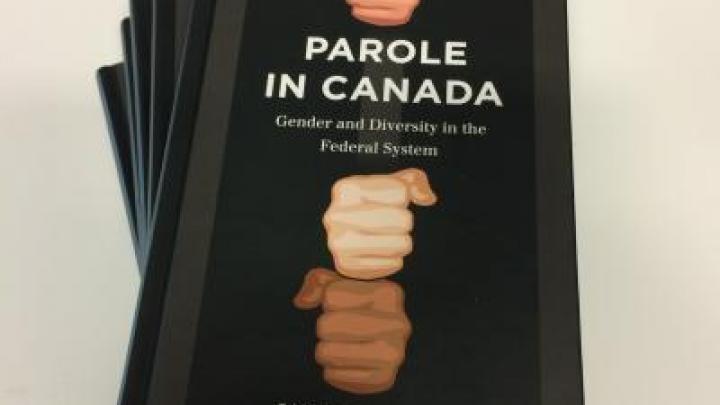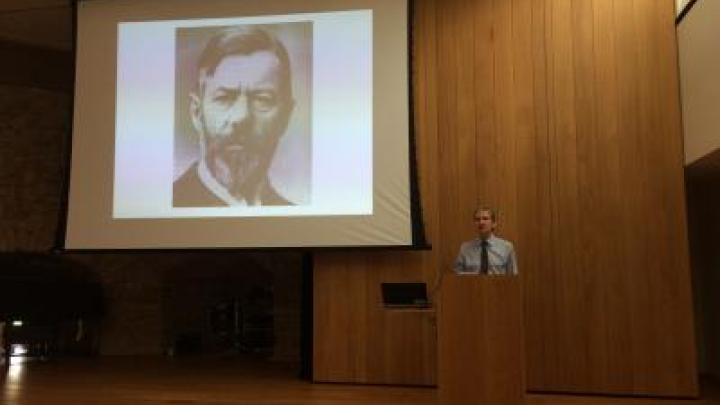Can Immigration Detention be Legitimate?
Posted
Time to read
Lea Sitkin writes:
Can immigration detention be legitimate? This was the question posed at the second All Souls Criminology seminar of 2013, which offered presentations by Dr. Mary Bosworth and Hindpal Singh Bhui from the HM Prisons Inspectorate. The question rephrases that posed twenty year previously by criminologist Richard Sparks, when a series of prison riots and the subsequent discovery of gross mismanagement led him to ask how prisons can be legitimate. Under this view, legitimacy is a property of both the external conditions that govern the use of prisons and the internal practices – the missed meals, arbitrary punishments, corrupt grievance procedures and so forth - that shape the experiences of prisoners.
If prisons are to be considered bad on these terms, detention centres are decidedly worse. The audience to last week’s seminar heard of the absence of an officially stated goal for immigration detention in the UK and the lack of judicial oversight of the decision to detain. Shockingly, in around one quarter of cases, inefficiencies by the UKBA are reasons for ongoing detention. Furthermore, the UK stands alone in the European context as having no statutory limit on detention. Far from “removal centres”, up to 10% of detainees at any one time have languished in detention for over a year. Under these conditions rates of mental distress are extremely high: a problem exacerbated by the regular - and illegal – detention of former torture victims. While official rhetoric situates immigration detention as a necessary and administrative response to illegal immigration, detainees often understood their situation as punitive, as well as inefficient: As one respondent to Dr. Bosworth’s study said, “I’ll just come back, Algeria is not so far”. Others were keen to emphasise the racial aspects of detention, the over-representation of non-white ethnic group a clear offshoot of a half century’s discriminatory immigration policy.
Barbed wire, lock-down, security: prison was the natural comparator for both detainees and staff members. However, Dr. Bosworth’s two year study revealed a complex relationship between the two institutions of prison and detention centre. For those detainees with experiences in the criminal justice system, some actually argued that they preferred prison because of the uncertainty regarding release dates and the lack of activities in removal centres. In turn, individual staff members were often keen to emphasise that they did not see detainees as prisoners. Accordingly, they often understood their own role in terms of “a shoulder to cry on.” Staff do, indeed perform many small acts of kindness, such as bringing in special foods or organising family visits. At the same time, this “care and welfare” discourse does not cover the securitised aspects of their work and staff members simultaneously complained about a lack of sanctions for unruly detainees. The Kafkaesque atmosphere of immigration removal is reflected in the psychological dissonance experienced by staff members, as well as the torment of detainees.
The evidence above begs the question: how much wider could the legitimacy gap be? However, as Hindpal Singh Bhui commented, while detainees have enacted many instances of rebellion – escapes, hunger strikes, riots and criminal damage – the day-to-day situation at removal centres is remarkably stable, in contrast to the chronic crisis of prisons observed by Sparks in the early 1990s. Why this is, is not certain. One possible explanation is that detainees are more likely to be positive and socially conformist than prisoners. Another is that they might be fearful that bad behaviour will lead to deportation – detainees questioned during HM Inspections often ask whether their complaints will jeopardise their immigration cases. Conversely, they might be motivated by an arbitrary kind of hope: with 1/3 of the population released each year, freedom may just be around the corner – a point reinforced constantly by staff members. Strong, positive relationships with these “reluctant jailers” may also foster a “relational legitimacy,” that acts as a nervous bulwark against revolt.
Taking a different angle, Dr. Bosworth argued that huge ethno-national diversity among detainees might weaken the possibility of collective action, although this was countered by Hindpal Singh Bhui, who saw the shared experience of detention as fostering cohesion. Perhaps foreign nationality is instead a better explanation for why immigration detention is seen as legitimate by the wider population. It is difficult – though not impossible – to imagine toleration of such practices directed at fellow British citizens, standing within the bounds of membership. Here, legitimacy unveils its conservative, exclusionary face.
For activists in this field, the most important question is whether to fight for reform or abolition. And the political landscape is tough. Recent recommendations made by the Inspectorate to introduce an independent panel for the examination of cases of lengthy detention were rejected by the UKBA on the basis that it already reviews its own cases. Spectacularly – and deliberately – missing the point of the Inspectorate, this example shows the strong resistance to amendments in working practices, making wholesale abolition seem like a far off dream indeed. At the same time, evidence of some change is apparent: Hindpal Singh Bhui discussed the example of the new Cedars immigration detention centre for families with children, which boasts extensive support and leisure facilities. The argument here is that by introducing a kinder detention regime, legitimacy is increased among in-mates – an interpretation which circumnavigates the wider, controversial issue of detention’s function in the first place. What both abolitionists and reformists can, however, agree upon is that the current state of affairs is inefficient, cruel, and immoral, even as it looks sustainable in the immediate future.
Keywords:
Share
YOU MAY ALSO BE INTERESTED IN

